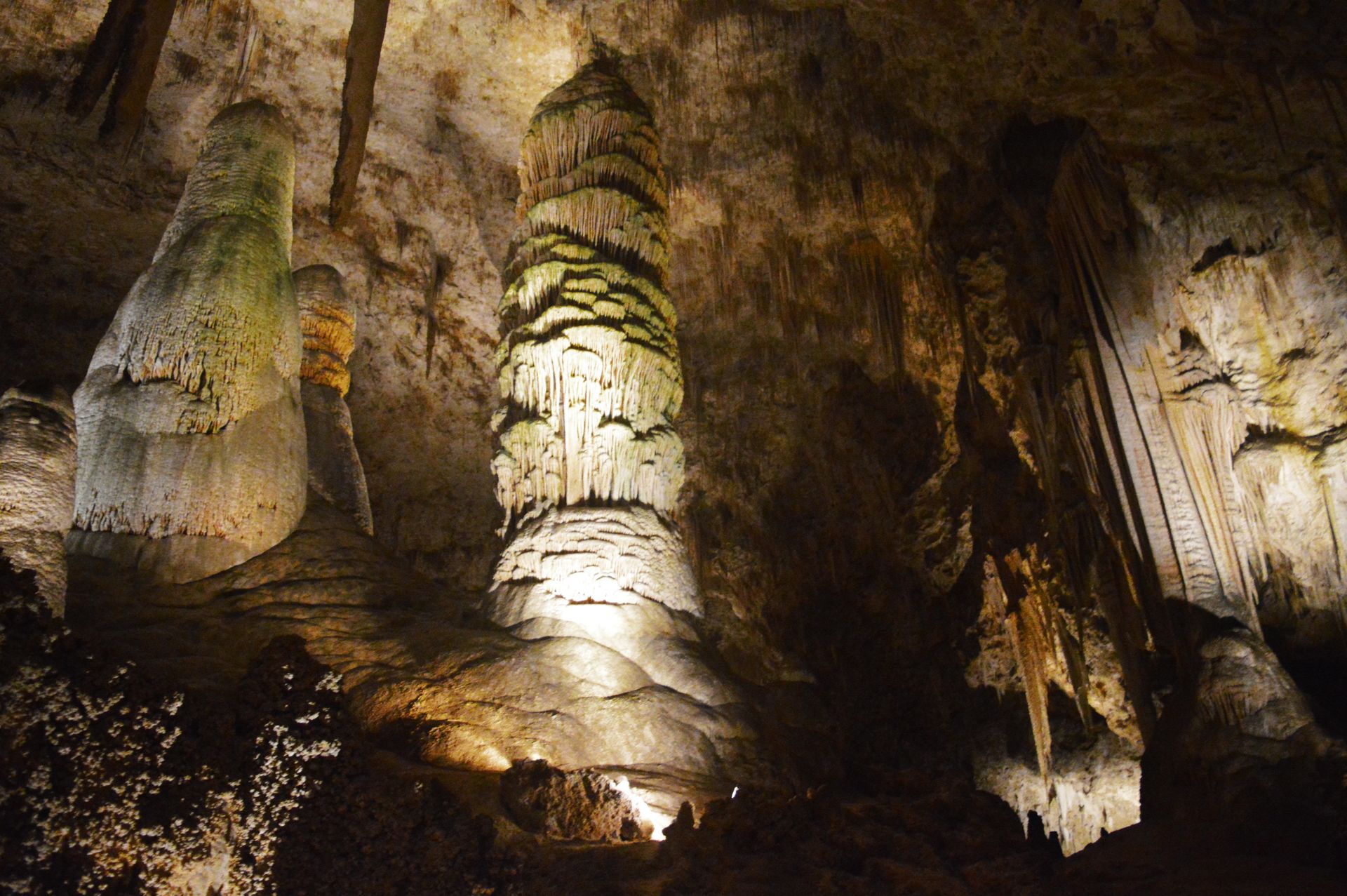"Something that should not exist in relation to human beings. Something that is as remote as the galaxy, incomprehensible as a nightmare, and beautiful in spite of everything."
Preface
A few quick notes before we get into the Caverns. First, none of my pictures came out as well as I had hoped. It turns out it is extremely difficult to shoot in the darkness of a cave, so I apologize for the quality. Second, as a landscape photographer I struggle to show a sense of scale, it was nearly impossible in the caverns, thus, keep in mind that everything you see in the pictures are much, much larger than they look. Stalagmite as large as houses, caverns bigger than cathedrals, and ceilings that could comfortably fit Miss Liberty - and her friends.
A Park in a Cave
When natural parks were first being established, there was almost a unanimous sense that to hold the title of "National Park" the area must include sweeping vistas, dramatic landscapes, snow-peaked mountains, giant trees, or something spectacular of that sort. That sentiment is the one of the reasons why a majority of the national parks are found in the west. Because of this belief, most of the national parks have these similar characteristics. It wasn't until Frederick Law Olmsted Jr. argued that national parks are more than just tall mountain ranges and should also include places of stunning wildlife, abnormal landscapes, and caves; thus establishing new types criteria to challenge what qualities a national park. Olmsted said, "The scenery of the Everglades was better described as an emotional experience ... no less arresting, no less memorable than the impressions derived from the great mountain and canyon parks of the West". This modernist idea gave the National Parks Service opportunities to branch out and protect other areas; creating and defending stunning parks such as the Everglades, Mammoth Caves, Carlsbad Caverns, and many others.
The park lays in the southern border of New Mexico, approximately 30 minutes north on route 62 from the also stunning Guadalupe National Park in Texas. Carlsbad Caverns looks from above, like a hill - wholly underwhelming. 750 feet under the surface, however, lays one of the most unique and stunning natural displays in the world. A maze of shafts and pits tunnel between rooms that could easily house the Sistine Chapel. Each 'room' contains gardens of calcium stalactites and stalagmites in all different shapes and sizes. Some sculptures stretched from floor to ceiling, casting massive shadows from the dim glow of the few flood lights. Other rooms displayed carpets of inch-tall stalagmites resembling hellish nails sticking from the ground up.
The Natural Entrance
Deciding to go to Carlsbad on a whim after an exhausting weekend hiking in the Guadalupe Mountains I had nothing prepared for the trip. I figured it was going to be a Handheld tour of a low-ceilinged, musty, cave. The first thing I noticed upon arriving at the visitor's station was that the parking lot was packed. Easily the most vehicles I had seen at any national park - contrast this with the no visitors at Guadalupe I was confused as to why so many came to see the cave. The visitor's center was relatively small and as per usual I stopped there first. The ranger at the counter explained that there were guided tours, however, 95% of the caves were self guided. There were two ways in; the elevator that takes you directly to the Big Room, or a two mile hike through the main entrance. The line for the elevator reflected the amount of cars in the parking lot, so we decided to take the main entrance.
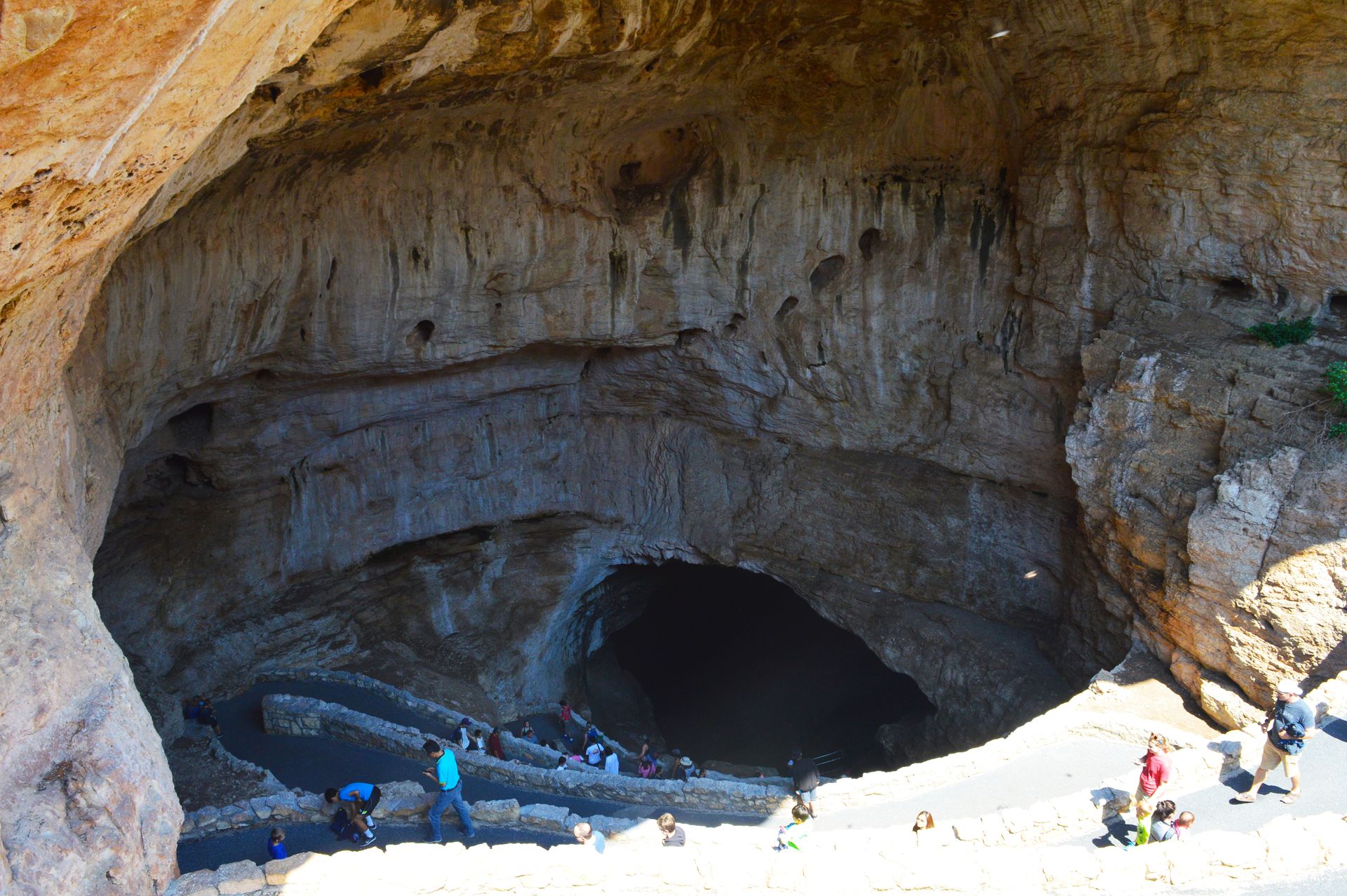
Right behind the visitor center was the Natural Cave Entrance. It was enormous. The first people to stumble across the mouth must have thought they discovered the doorway to the underworld, and in many ways it was. Swallows swirled around the opening, using the rock shelves and holes as protection for their nests. Into the entrance winding hundreds of yards into blackness was a single paved path. Dozens of people of all ages were ascending and descending into the natural wonder - there were a lot of people.
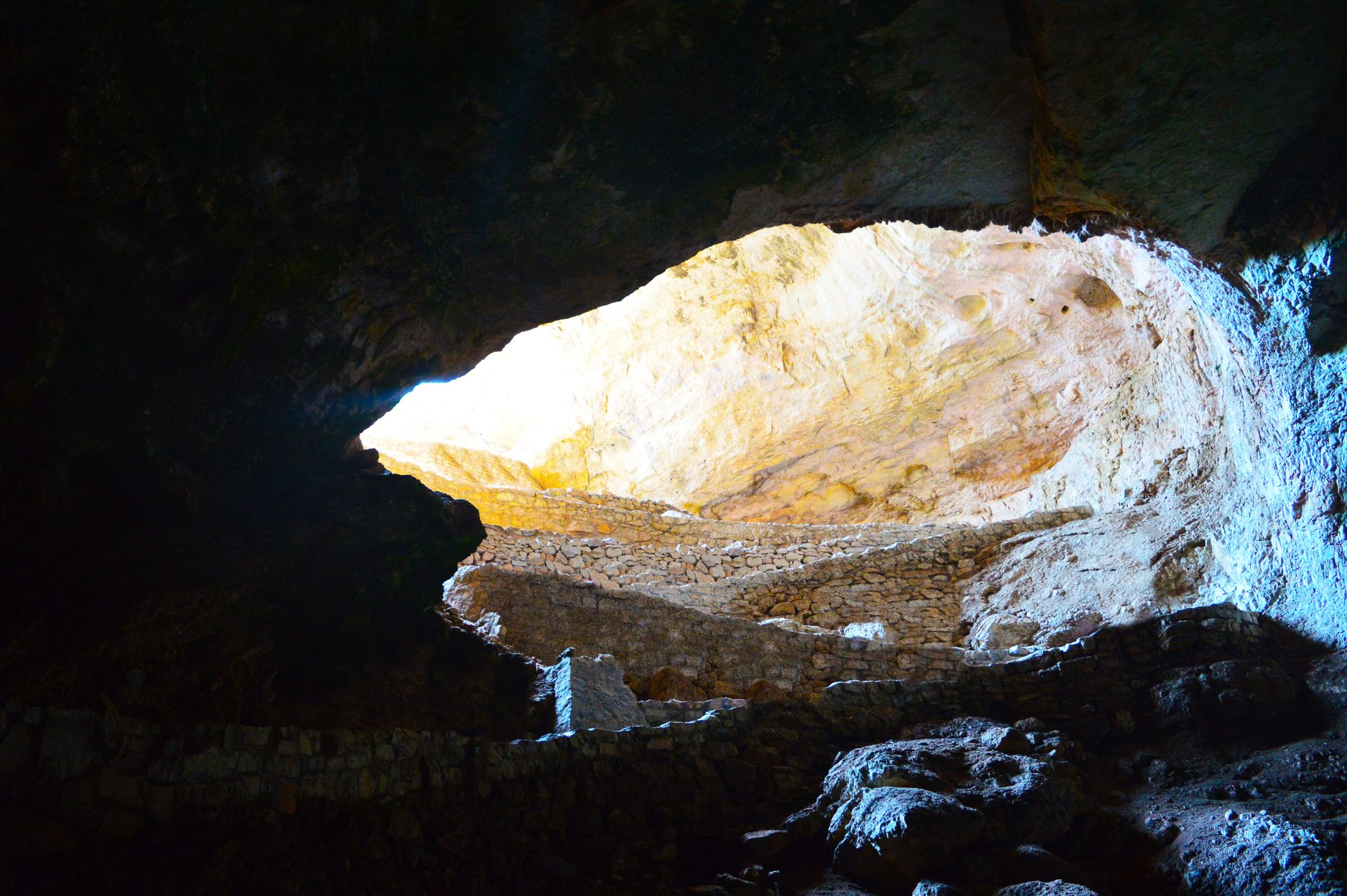
The two miles in weren't bad, but we did cover over a thousand feet of elevation fairly quickly. The park was extremely well maintained and honestly one of the better handicap accessible parks I have come across. the entire tunnel network had paved paths and handrails along the entire way. If you couldn't make it down the two mile natural entrance, you would always ride the 75-story elevator. It really was a park for all to enjoy.
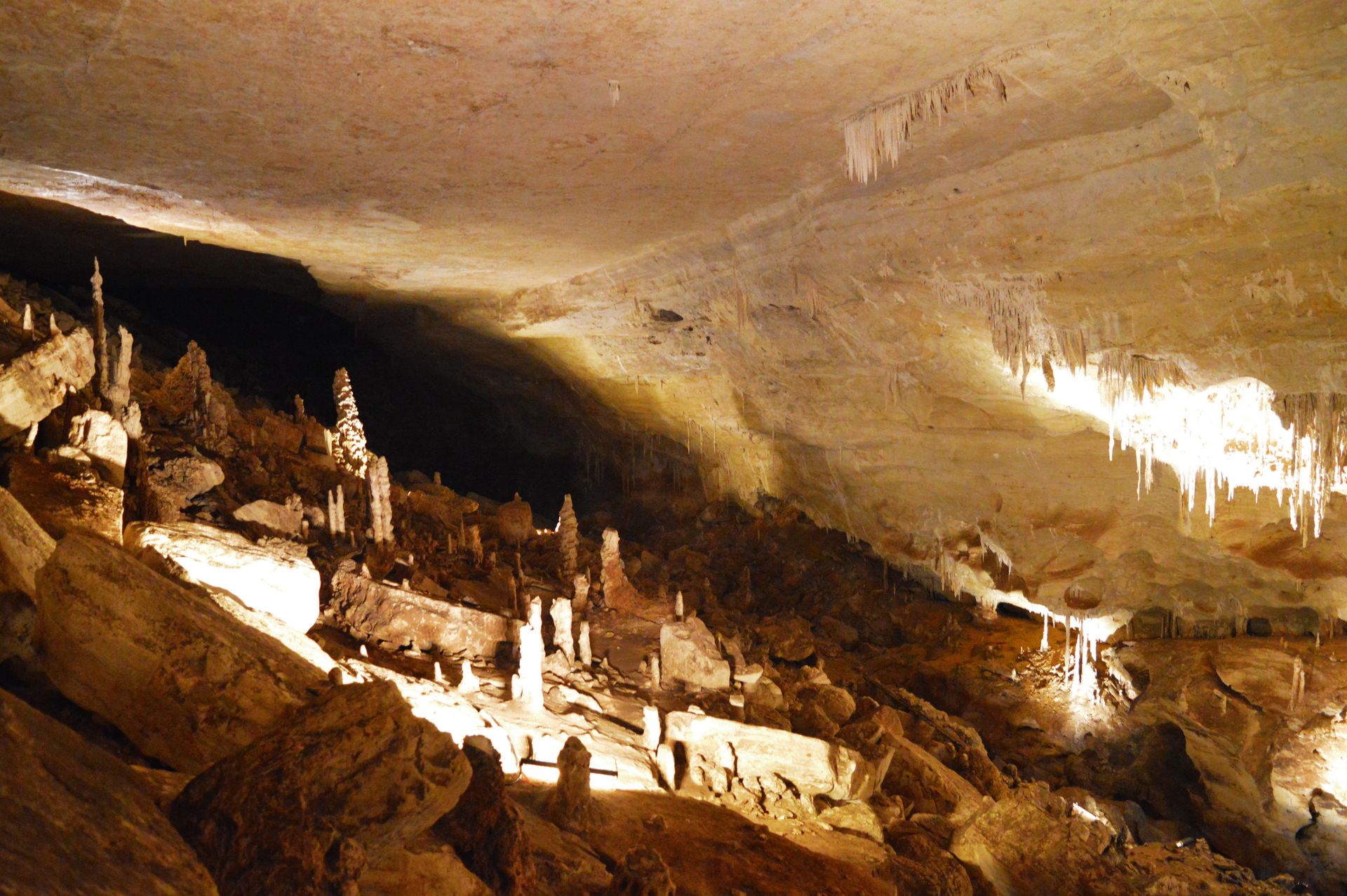
I was so absolutely impressed with everything I was looking at the entire way down to the Big Room. The park did a magnificent job of keeping true to the natural integrity of the cave while making it open to all. The lighting was strategically placed and not overly bright, bringing the caves depth and architecture alive. Everything was interesting and enormous. I couldn't wrap my head around the sheer volume inside the cavern.

Selfishly, I was distracted by all the commotion. I make it a point when visiting national parks, to hike out as far as I can to get away from crowds and connect with nature on an intimate level. My normal ritual was not possible here. Hundreds of people's voices, shouts, and yells echoed off the walls turning into a constant roar. The paths were packed and often cramped, and you had to stay on them to preserve the cavern floors. There was no where to sneak off to have a spot to yourself.
That being said, it was heartwarming to see the mass of people coming out to enjoy a national park - and everyone was having fun. I quickly got past the melancholy and grew to enjoy the company.
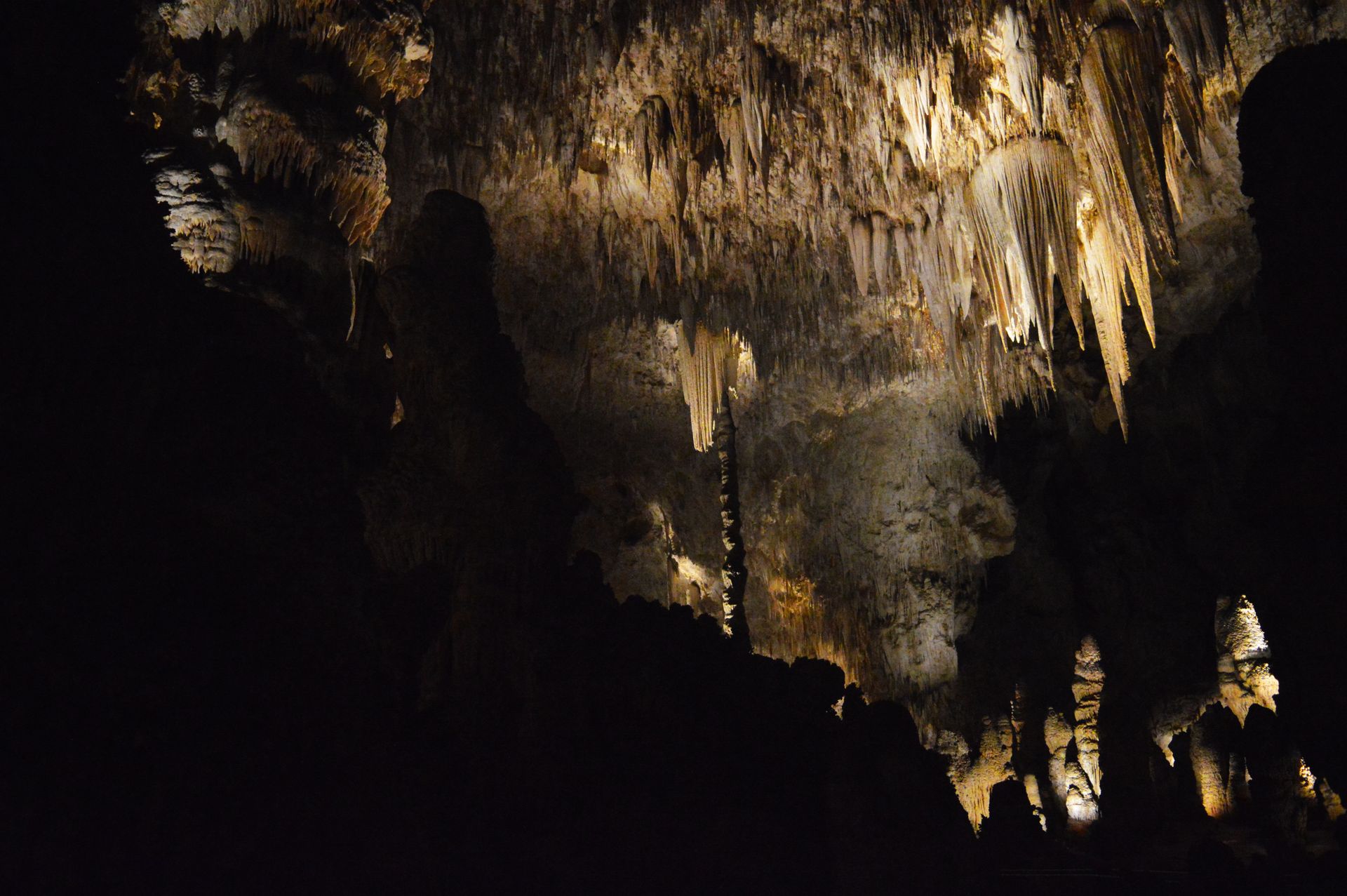
The Big Room
The entrance trail eventually evens out and opens up into the largest cavern called the Big Room. This is where the elevator drops you off from the visitor center above, I recommend walking in, there was plenty to see. In the Big Room there were a few 'trails'. There was even a little lunch room and gift shop down there! The path split into a mile long tour of some of the cavern's rooms. Interestingly enough, each room hosted different types of rock formations. Due to slight differences in air, water, and erosion, the stalactites were striking different looking.
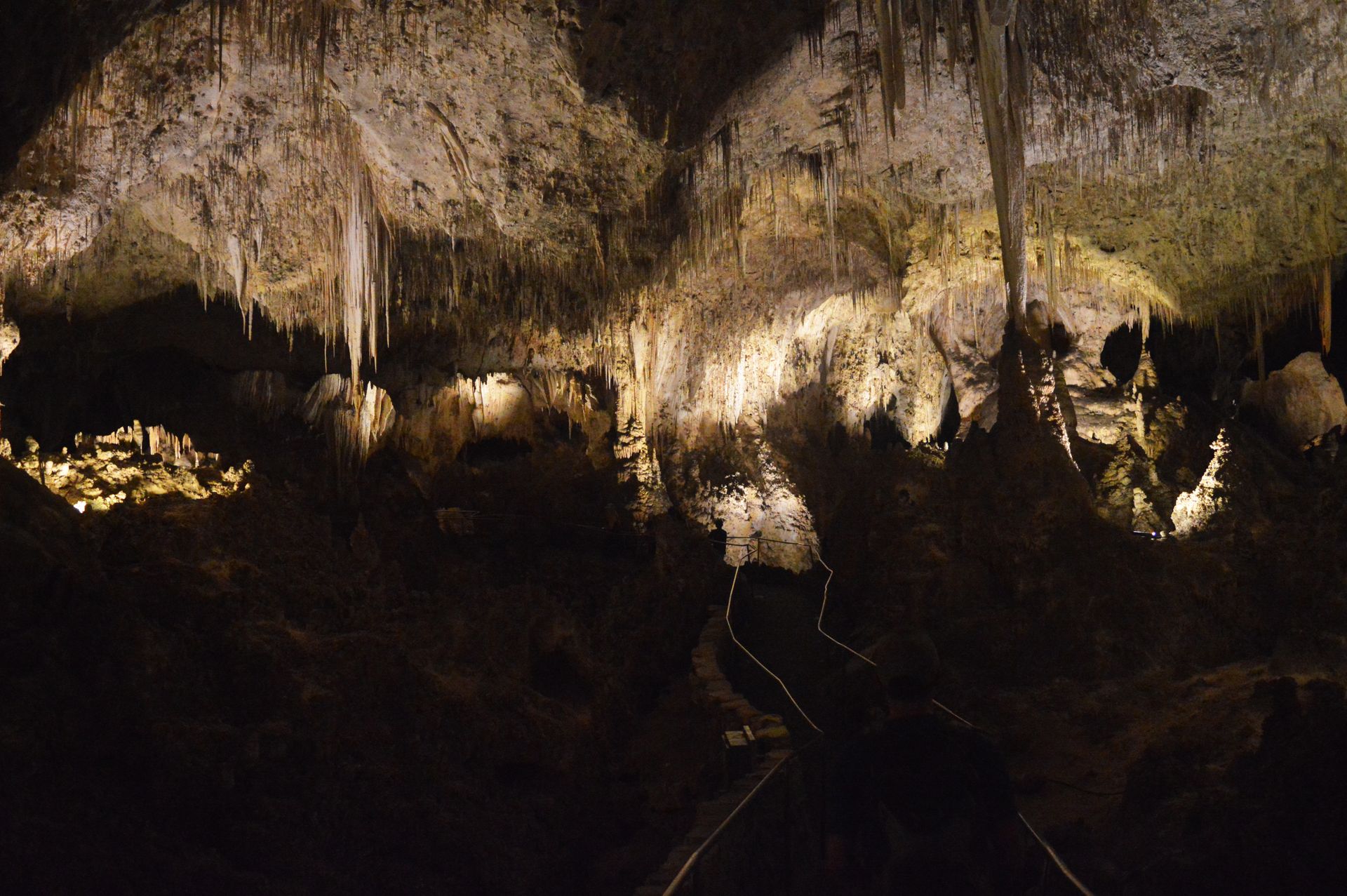
Some stalactites were absolutely beautiful, looking almost as if they were hand carved for an underwordly deity. Others were gnarly, sopping yet, and even colorful. The sound of constant dripping reminded you that the entire scene was a work in progress.
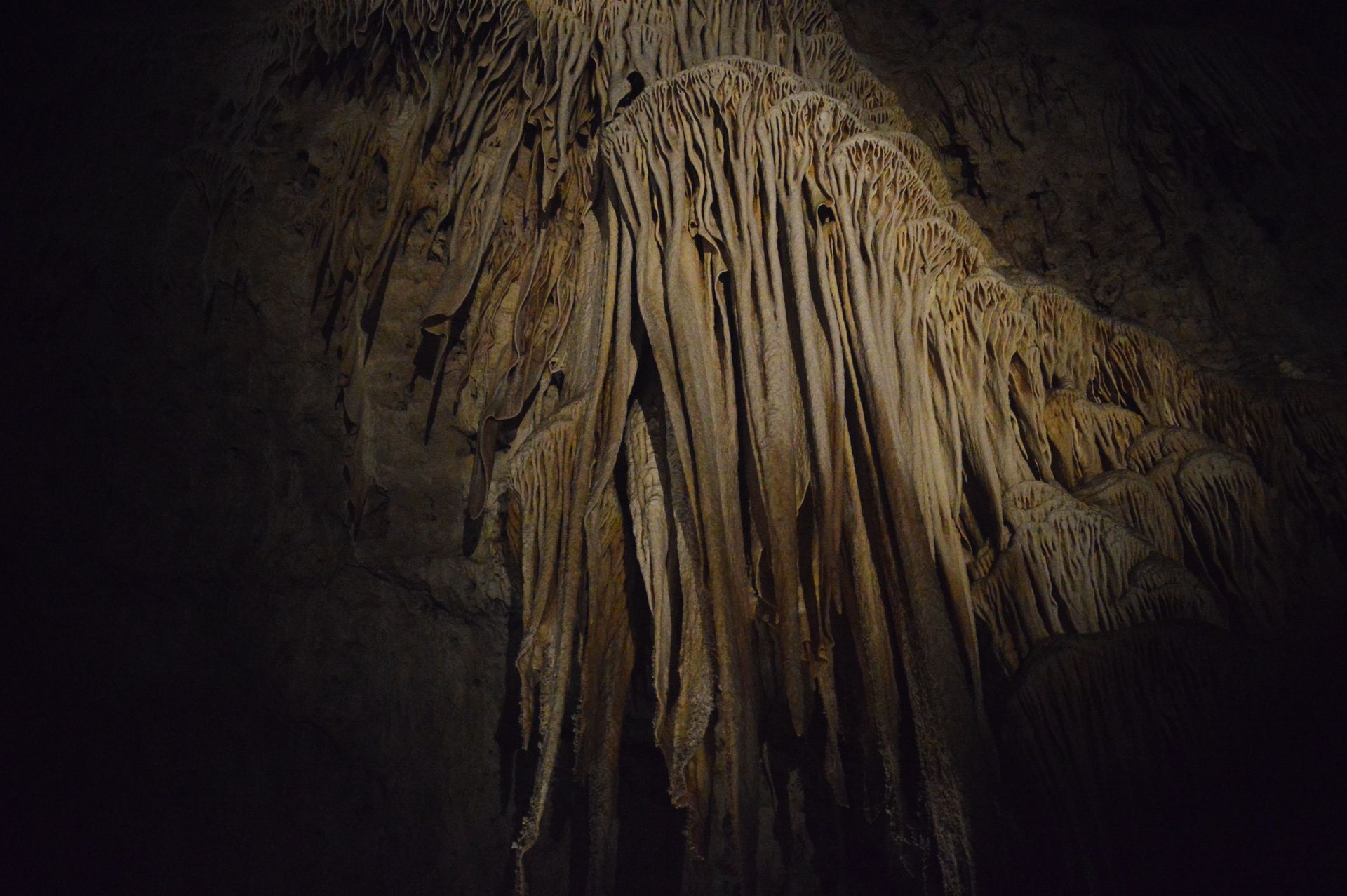
My personal favorite was a sharp, long stalactite that pierced through the cavern roof like a dagger thrust into a hollow log. It hung from the ceiling inches away from the path.

Evidence of previous attempts to explore the caver were littered about. Ladders, trollies, and wooden towers all showed a time when explorers dangerously advanced through the dark pits. As far as I know, there are still sections of the cave that have yet to be explored! I can't image what those people were looking for down there; I give them credit to how far they made it without modern technology and tools.
